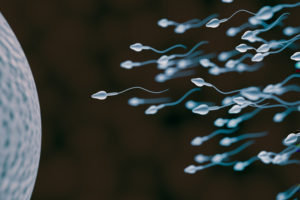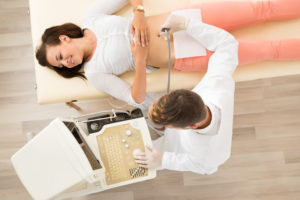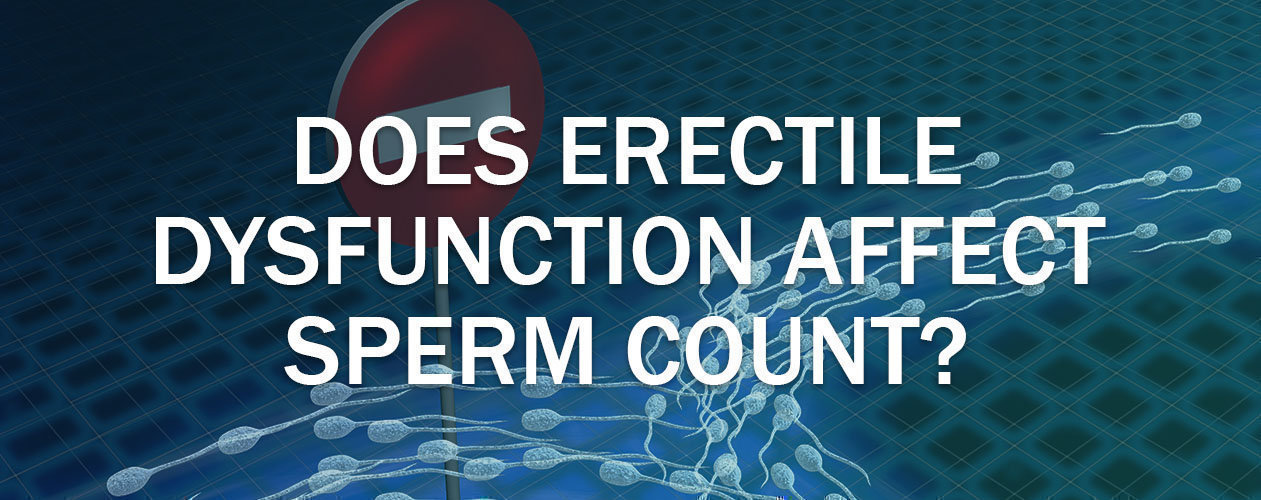Does Erectile Dysfunction Effect Sperm Count?
In order to understand whether erectile dysfunction (ED) can affect sperm count or not, we need to explore and understand what these individual terms are and how they came about.
Click HERE to View Viagra Prices > >
Male fertility and sperm count
Fertility, in general, is the ability to conceive children, whilst conception is the action of conceiving a child. Conception, also known as fertilisation, is the moment when a sperm cell from a male breaches the ovum, or egg, from a female. It is the initial stage of development for human growth. During sexual intercourse, the man releases an abundance of sperm, around 250 million at each ejaculation, into the vagina.
Male infertility refers to a male’s inability to cause pregnancy in a fertile female. Sperm count is a measure of the number of spermatozoa per ejaculation or per measured amount of semen, used as an indication of a man’s fertility.
Low sperm count is when the fluid (semen) a man ejaculates during an orgasm contains fewer sperm cells than normal. A low sperm count is also called oligospermia (ol-ih-go-SPUR-me-uh). The complete absence of sperm is called azoospermia. Sperm count is considered lower than normal if there are fewer than 15 million sperm per millilitre of semen.
According to the World Health Organisation (WHO), a normal sperm count is a concentration of 15 million spermatozoa/ml, with a total semen volume of at least 2 ml. The total number of spermatozoa in the ejaculate should be at least 40 million.
Common causes of abnormal sperm parameters are varicocele (a mass of varicose veins in the spermatic cord), accessory gland infection, immunological factors, congenital abnormalities, obstructive azoospermia, and iatrogenic, systemic, and endocrine disorders.
The most common manifestation of male infertility is a low sperm count.

Production of sperm
Sperm, also known as Spermatozoon (pl spermatozoa), is the mature male reproductive cell carrying all the genetic contribution from the father and bearing either an X chromosome to produce a daughter, or a Y chromosome to produce a son. The term is derived from the Greek word (σπέρμα) sperma (meaning “seed”).
Sperm develops in the seminiferous tubules of the testes and resembles a tadpole. They are microscopic at about 0.05mm long and have a head with a nucleus, a neck, and a tail that propels that sperm forward. Developed in vast numbers after puberty and occurring in the millions in seminal fluid, spermatozoa are the generative component of the semen.
Spermatogenesis is the development of mature spermatozoa from spermatogonia (cells produced at an early stage in the formation of spermatozoa and formed in the wall of seminiferous tubules of the testes). The process has three phases: spermatocytogenesis, meiosis, and spermiogenesis and lasts for about 70 days.
Male fertility is dependent upon the successful perpetuation of spermatogenesis. Even though other hormones facilitate the process of spermatogenesis, only the steroid hormone/androgen testosterone is essential to maintain spermatogenesis.
Testosterone is produced by the Leydig cell in response to stimulation with luteinizing hormone (LH). Due to the localized production of testosterone from Leydig cells, testosterone levels in the testes are 25- to 125-fold higher than that present in serum. The physiological importance of high testosterone levels in the testis is not fully understood. However, it has been established that sperm production decreases exponentially once testosterone levels in the testis fall below 70 mM.
The high levels of testosterone in the testis cannot be explained by a sequestration mechanism to “deactivate” the hormone because at least two-thirds of testicular testosterone are free or weakly bound to albumin and is bioavailable. Only one-third of testosterone is tightly bound by sex hormone binding globulin (SHBG) or androgen-binding protein (ABP). Thus, the bioavailable testosterone in the testis greatly exceeds the Kd for the androgen receptor (AR) binding of approximately 1 mM (Kd stands for dissociation constant and is used to describe the affinity between a ligand (such as a drug) and a protein i.e how tightly a ligand binds to a particular protein).
Follicle-stimulating hormone (FSH), released by the pituitary gland stimulates primary spermatocytes to undergo the first meiotic division. Testosterone, on the other hand, stimulates the development of secondary spermatocytes into mature spermatozoa.
Thus, in the absence of testosterone or the androgen receptor, spermatogenesis does not proceed beyond the meiosis stage (a type of cell division).
What is the mechanism of ejaculation?
Ejaculation is the action of ejecting semen from the body and is a normal part of a male’s sexual function. It consists of two coordinated neurological reflexes: emission and ejection. An orgasm is separate but occurs simultaneously.
Emission comprises contractions of the seminal vesicles and prostate, resulting in the expulsion of sperm and seminal fluid into the posterior urethra.
Ejection comprises the pulsatile contractions of the bulbocavernosus and pelvic floor muscles with the relaxation of the external urinary sphincter.
An orgasm is said to occur due to the cerebral processing of pudendal nerve sensory stimuli resulting from increased pressure in the posterior urethra, sensory stimuli arising from the verumontanum and contraction of the urethral bulb and accessory sexual organs.
Semen is the male reproductive fluid that is ejaculated and contains spermatozoa in suspension.
What is Erectile Dysfunction (ED)?
The term erectile dysfunction was introduced in 1992 to replace the word impotence. ED is the consistent and/or recurrent inability of any male to attain and/or maintain a penile erection sufficient enough for sexual intercourse.
ED is a clinical condition that can affect males of any age but mainly affects men aged 40 years and older and can be debilitating. The symptoms of ED are compounded by the associated anxiety, depression and/or feelings of low self‐esteem.
ED involves an alteration in any of the components of the erectile response, including organic, relational and psychological. Organic causes of ED include anatomical, vasculogenic (ie arterial or venous), neurogenic, endocrinological and drug-related side effects. Psychogenic causes may be generalised or situational. However, the reality is that anxiety and depression commonly accompany erectile dysfunction, irrespective of the original cause and consequently, nearly all organic erectile dysfunction will eventually become ‘mixed’.
Common disorders that cause ED include diabetes mellitus, hypothyroidism and hypertension. Lifestyle factors such as obesity, smoking, little or no physical exercise, and lower urinary tract symptoms, have also been linked to the development of ED.
Androgen deficiency has been found to be another cause of ED although it is rare in the young population ie males aged under 40 years.
ED is said to be a strong predictor for coronary artery disease, and cardiovascular assessment of any non-cardiac male patient presenting with ED is now recommended.

What is the mechanism of an erection?
Penile erection is a haemodynamic result of a complex neurovascular process in which nerves, endothelium of sinusoids and blood vessels, and smooth muscle cells in the target organ are involved. It involves different central and peripheral neural and/or humoral mechanisms.
Penile erection and detumescence (the process of subsiding from a state of tension, swelling, or (especially) sexual arousal) are regulated by relaxation and contraction, respectively, of the smooth muscle located in the arteries and the cavernous body.
In the flaccid state, the sympathetic nervous system is dominant, and the arterial and corporal smooth muscle is tonically contracted. Thus, only a minimal amount of blood flows through the cavernous artery into the cavernous body.
On the other hand, after sexual stimulation, parasympathetic activity causes a decrease in the peripheral resistance due to vasodilatation (dilation of vessels), and the blood flow through the cavernous and helicine arteries increases. The intracavernous pressure increases without any increase in the systemic pressure.
In the full erectile state, increased blood volume in the cavernous body and the following compression of the subtunical drainage veins against the rigid tunica albuginea lead to a reduction in the venous outflow (referred to as the veno-occlusive mechanism), and therefore, a high intracavernous pressure is maintained.
However, when the corporal smooth muscle is unable to relax sufficiently and/or the corporal tissue loses its normal compliance, the increased intracavernous pressure during erection cannot adequately compress the subtunical veins, resulting in the leakage of blood out of the cavernous body during erection.
This is a major cause of ED and is referred to as the corporal veno-occlusive dysfunction (CVOD). CVOD occurs when the smooth muscle content decreases and/or when the collagen content increases in the cavernous body.
Central neurotransmitters and neuropeptides can either facilitate, for example, dopamine (DA), or inhibit (e.g. opioid peptides) penile erection by acting in several brain areas. Serotonin (also known as 5-HydroxyTriptamine, 5-HT) can exert both facilitatory and inhibitory effects, depending on the receptor subtype involved. Peripheral neurotransmitters released from sympathetic (noradrenaline, ATP) and parasympathetic (acetylcholine, nitric oxide, vasoactive intestinal peptide) nerves entering the corpora cavernosa, corpus spongiosum and glans penis regulate blood flow during erection and detumescence.
Nitric oxide (NO) generated by neuronal NO synthase (nNOS) initiates penile erection but is not thought to participate in the sustained erection required for normal sexual performance. Rather, cAMP-dependent phosphorylation of nNOS mediates erectile physiology, including sustained erection.
Adenosine, a physiological vasorelaxant, has also been shown to be a modulator of penile erection. In fact, increased levels of adenosine have been shown to be a causative factor for priapism (persistent and painful erection of the penis).
The angle of the erect penis is determined by its size and its attachment to the puboischial rami (the crura) and the anterior surface of the pubic bone (the suspensory and funiform ligaments). In men who have a long, heavy penis or a loose suspensory ligament, the angle is usually not greater than 90o, even with full rigidity.
To summarise, an erection occurs under sexual stimulation (sexual thoughts or direct contact) when vasodilation and relaxation of trabecular smooth muscle allows blood to flow into the cavernosal sinusoids and in turn increases the intracavernosal pressure (ICP) in the penis.
Click HERE to View Viagra Prices > >

Does Erectile Dysfunction affect sperm count?
Producing erections and making sperm are two separate functions within the body, so one does not directly affect the other.
So the simple answer to the question is NO, erectile dysfunction does not affect sperm count.
Men diagnosed with ED may get demoralised if they assume that the problems they are having with getting and/or maintaining an erection during sexual intercourse may make them incapable of impregnating their partner as well. This is an inaccurate assumption.
A man may have problems getting and/or maintaining an erection but still be able to produce perfectly good sperm at a normal concentration.
Conversely, a man may be able to get and maintain an erection during sexual intercourse but have little or no sperm in his semen.
That said, a man with ED who produces a normal concentration of sperm may have difficulties delivering his semen inside the woman he wants to get pregnant. Fortunately, ED is treatable.
References
All links were accessed on the 6th – 9th of November 2018:
- Erectile Dysfunction, Shamloul R, Ghanem H; Lancet. 2013 Jan 12;381(9861):153-65. doi: 10.1016/S0140-6736(12)60520-0. Epub 2012 Oct 5. https://www.ncbi.nlm.nih.gov/pubmed/23040455
- Erectile dysfunction through the ages J. Shah First published: 14 August 2002 https://doi.org/10.1046/j.1464-410X.2002.02911.x full -> https://onlinelibrary.wiley.com/doi/full/10.1046/j.1464-410X.2002.02911.x
- Free testosterone correlated with erectile dysfunction severity among young men with normal total testosterone. Huang YP, Liu W, Chen SF, Liu YD, Chen B, Deng CH, Lu MJ; Int J Impot Res. 2018 Oct 22. doi: 10.1038/s41443-018-0090-y. https://www.ncbi.nlm.nih.gov/pubmed/30349000
- Erectile dysfunction. Yafi FA, Jenkins L, Albersen M, Corona G, Isidori AM, Goldfarb S, Maggi M, Nelson CJ, Parish S, Salonia A, Tan R, Mulhall JP, Hellstrom WJ; Nat Rev Dis Primers. 2016 Feb 4;2:16003. doi: 10.1038/nrdp.2016.3. https://www.ncbi.nlm.nih.gov/pubmed/27188339
- The Role of Hypothyroidism in Male Infertility and Erectile Dysfunction Mohammad Reza Nikoobakht, Mehdi Aloosh, Nafiseh Nikoobakht, Abdolrasoul Mehrsay, Farzad Biniaz, Mohammad Amin Karjalian; http://journals.sbmu.ac.ir/urolj/index.php/uj/article/view/1389/634
- Diabetes Mellitus Induced Impairment of Male Reproductive Functions: A Review Author(s): Ram Niwas Jangir, Gyan Chand Jain. Journal Name: Current Diabetes Reviews; Volume 10, Issue 3, 2014; http://www.eurekaselect.com/122624/article
- Lifestyle modifications and erectile dysfunction: what can be expected? Maria Ida Maiorino, Giuseppe Bellastella, and Katherine Esposito; https://www.ncbi.nlm.nih.gov/pmc/articles/PMC4291878/
- Modulation of Dopaminergic Pathways to Treat Erectile Dysfunction Ulf Simonsen Simon Comerma‐Steffensen Karl‐Erik Andersson First published: 19 August 2016 https://doi.org/10.1111/bcpt.12653; https://onlinelibrary.wiley.com/doi/full/10.1111/bcpt.12653
- Much more than prescribing a pill – Assessment and treatment of erectile dysfunction by the general practitioner Volume 46, No.9, September 2017 Pages 634-639; https://www.racgp.org.au/afp/2017/september/much-more-than-prescribing-a-pill/
- Mechanisms of Penile Erection and Basis for Pharmacological Treatment of Erectile Dysfunction K.-E. Andersson Martin C. Michel, ASSOCIATE EDITOR Pharmacological Reviews December 2011, 63 (4) 811-859; DOI: https://doi.org/10.1124/pr.111.004515; http://pharmrev.aspetjournals.org/content/63/4/811.long
- Physiology of Penile Erection and Pathophysiology of Erectile Dysfunction, Robert C. Dean MD, Tom F. Lue MD, Department of Urology, University of California–San Francisco, San Francisco Medical Center, 400 Parnassus Avenue, San Francisco, CA 94143-0738, USA Available online 10 November 2005; Urologic Clinics of North America Volume 32, Issue 4, November 2005, Pages 379 – 395 https://www.sciencedirect.com/science/article/pii/S0094014305000790?via%3Dihub
- Cyclic AMP-dependent phosphorylation of neuronal nitric oxide synthase mediates penile erection; K. Joseph Hurt, Sena F. Sezen, Gwen F. Lagoda, Biljana Musicki, Gerald A. Rameau, Solomon H. Snyder, and Arthur L. Burnettb; https://www.ncbi.nlm.nih.gov/pmc/articles/PMC3478647/
- Role of adenosine signalling in penile erection and erectile disorders; Phatarpekar PV, Wen J, Xia Y; https://www.ncbi.nlm.nih.gov/pubmed/19889148
- An Update of the International Society of Sexual Medicine’s Guidelines for the Diagnosis and Treatment of Premature Ejaculation (PE); Stanley E Althof, PhD, Chris G McMahon, MD, Marcel D Waldinger, MD, PhD, Ege Can Serefoglu, MD, Alan W Shindel, MD, P Ganesan Adaikan, PhD, DSc, Edgardo Becher, MD, PhD, John Dean, MD, Francois Giuliano, MD, PhD, Wayne JG Hellstrom, MD, Annamaria Giraldi, MD, PhD, Sidney Glina, MD, PhD, Luca Incrocci, MD, PhD, Emmanuele Jannini, MD, Marita McCabe, PhD, Sharon Parish, MD, David Rowland, PhD, R Taylor Segraves, MD, PhD, Ira Sharlip, MD, and Luiz Otavio Torres, MD; https://www.ncbi.nlm.nih.gov/pmc/articles/PMC4184677/
- Premature ejaculation: challenging new and the old concepts; Odunayo Kalejaiye, Writing – Original Draft Preparation, Khaled Almekaty, Writing – Review & Editing, Gideon Blecher, Writing – Review & Editing, and Suks Minhas, Conceptualization, Supervision, Writing – Review & Editing; https://www.ncbi.nlm.nih.gov/pmc/articles/PMC5717471/
- Dapoxetine: a new option in the medical management of premature ejaculation Chris G McMahon; Ther Adv Urol. 2012 Oct; 4(5): 233–251. doi: [10.1177/1756287212453866]; https://www.ncbi.nlm.nih.gov/pmc/articles/PMC3441133/
- Premature ejaculation Chris G. McMahon; Indian J Urol. 2007 Apr-Jun; 23(2): 97–108. doi: [10.4103/0970-1591.32056]; https://www.ncbi.nlm.nih.gov/pmc/articles/PMC2721550/
- What is Conception? – Definition, Ovulation & Symptoms; https://study.com/academy/lesson/what-is-conception-definition-ovulation-symptoms.html
- What Is Conception?; https://www.familyeducation.com/pregnancy/ovulation-conception/what-conception
- Spermatozoa https://medical-dictionary.thefreedictionary.com/spermatozoa
- Spermatogenesis https://medical-dictionary.thefreedictionary.com/spermatogenesis
- The Regulation of Spermatogenesis by Androgens Lee B. Smith1 and William H. Walker; Semin Cell Dev Biol. Author manuscript; available in PMC 2015 Jun 1. Published in final edited form as: Semin Cell Dev Biol. 2014 Jun; 0: 2–13. Published online 2014 Mar 2. doi: [10.1016/j.semcdb.2014.02.012]; https://www.ncbi.nlm.nih.gov/pmc/articles/PMC4043871/
- Sperm Parameters: Paradigmatic Index of Good Health and Longevity Alexander E. Omu; Med Princ Pract. 2013 Dec; 22(Suppl 1): 30–42. Published online 2013 Sep 13. doi: [10.1159/000354208]; https://www.ncbi.nlm.nih.gov/pmc/articles/PMC5586815/
- Chronic kidney disease and erectile dysfunction Etsu Suzuki, Hiroaki Nishimatsu, Shigeyoshi Oba, Masao Takahashi, and Yukio Homma; https://www.ncbi.nlm.nih.gov/pmc/articles/PMC4220354/
- Does erectile dysfunction mean that I am sterile?; https://www.sharecare.com/health/erectile-dysfunction/does-erectile-dysfunction-mean-sterile
- Does erectile dysfunction mean that I am infertile?; https://www.sharecare.com/health/erectile-dysfunction/erectile-dysfunction-infertile

